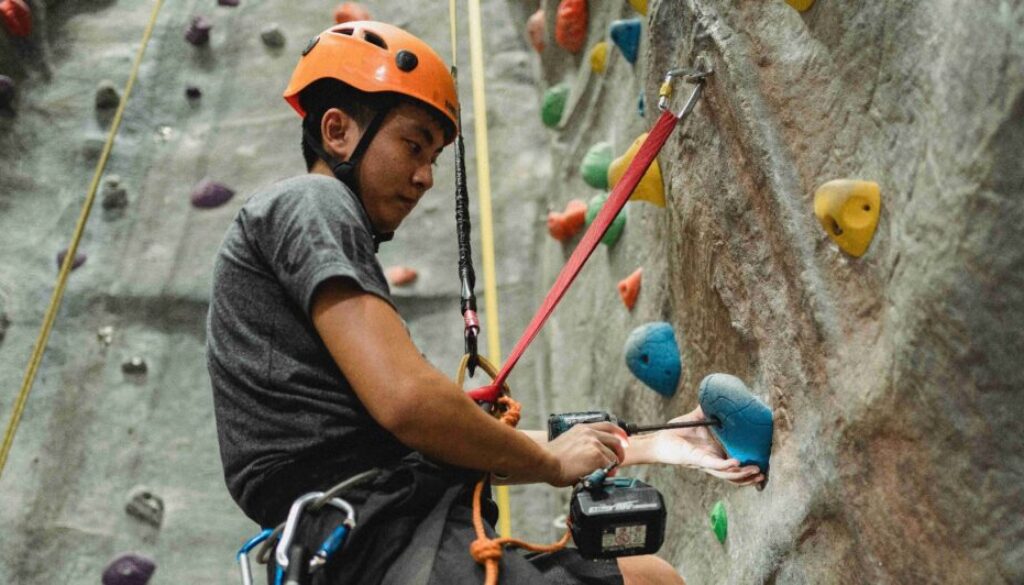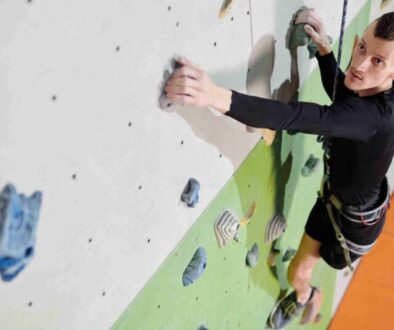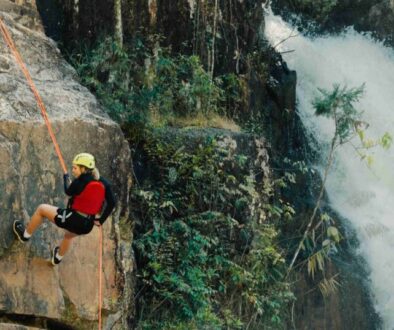Top 10 Rock Climbing Tools Every USA Adventurer Needs!
Gear up for your next climb with our top-rated selection of rock climbing tools. From harnesses to carabiners, we’ve got you covered. Explore now!
Rock Climbing Tools
Have you ever wondered how adventurers conquer towering cliffs and rocky crags with apparent ease? In the heart-pounding world of rock climbing, having the right tools at your disposal can mean the difference between a thrilling ascent and a risky endeavor.
For many enthusiasts, selecting the appropriate rock climbing tool poses a significant challenge, leading to safety concerns and hindered experiences. Fear not, because this article will delve into the essential rock climbing tools that every enthusiast should have in their arsenal.
Join us as we explore the significance of these tools, how they mitigate risks, and offer insights into their selection and usage.
Harness
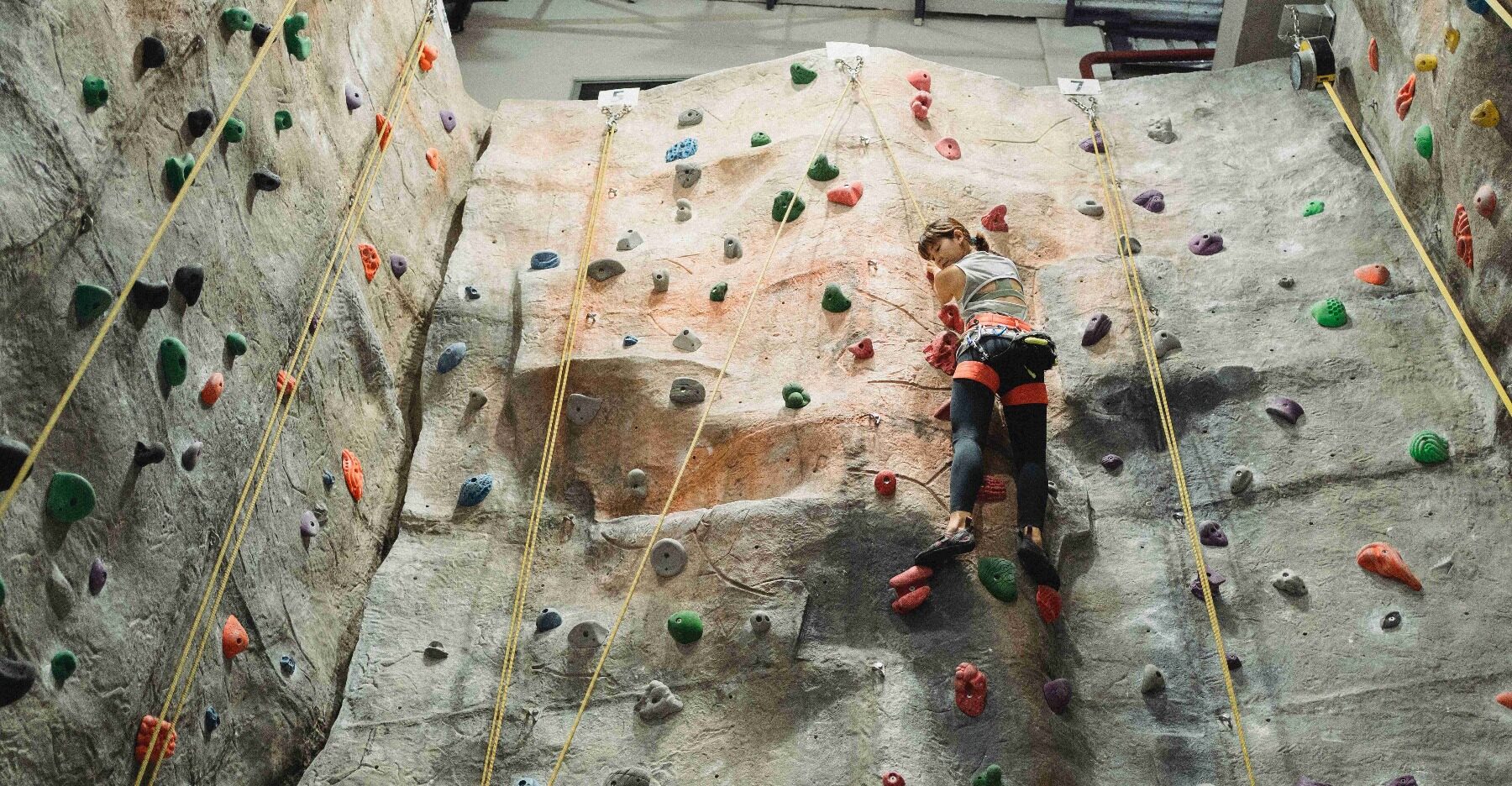
The harness stands as a pivotal element in the arsenal of rock climbing tools, providing essential safety and security to climbers during their ascents. Serving as a padded, adjustable sling around the waist and legs, it distributes the force of a fall across the body, significantly reducing the risk of serious injuries.
Why is Harness necessary for rock climbers?
For rock climbers, a harness is indispensable, acting as their primary safety measure against potential hazards. Without a proper harness, climbers face increased risks of injury or even fatality in the event of a fall.
Where to Purchase Harness?
In the USA, climbers can procure high-quality harnesses from reputable outdoor gear retailers such as REI, Backcountry, and Moosejaw. Additionally, climbing gyms often feature pro shops stocked with various harness models to cater to climbers’ needs.
Key Features of Harness:
- Comfort: A well-fitting harness ensures climbers can move freely and comfortably during their ascent, enhancing their overall climbing experience.
- Durability: Constructed from robust materials like nylon or Dyneema, harnesses are built to withstand significant forces, providing climbers with long-lasting safety and reliability.
- Gear Loops: Equipped with gear loops attached to the waist belt, harnesses allow climbers to conveniently carry and access essential climbing equipment, ensuring preparedness on the rock face.
Climbing Shoes
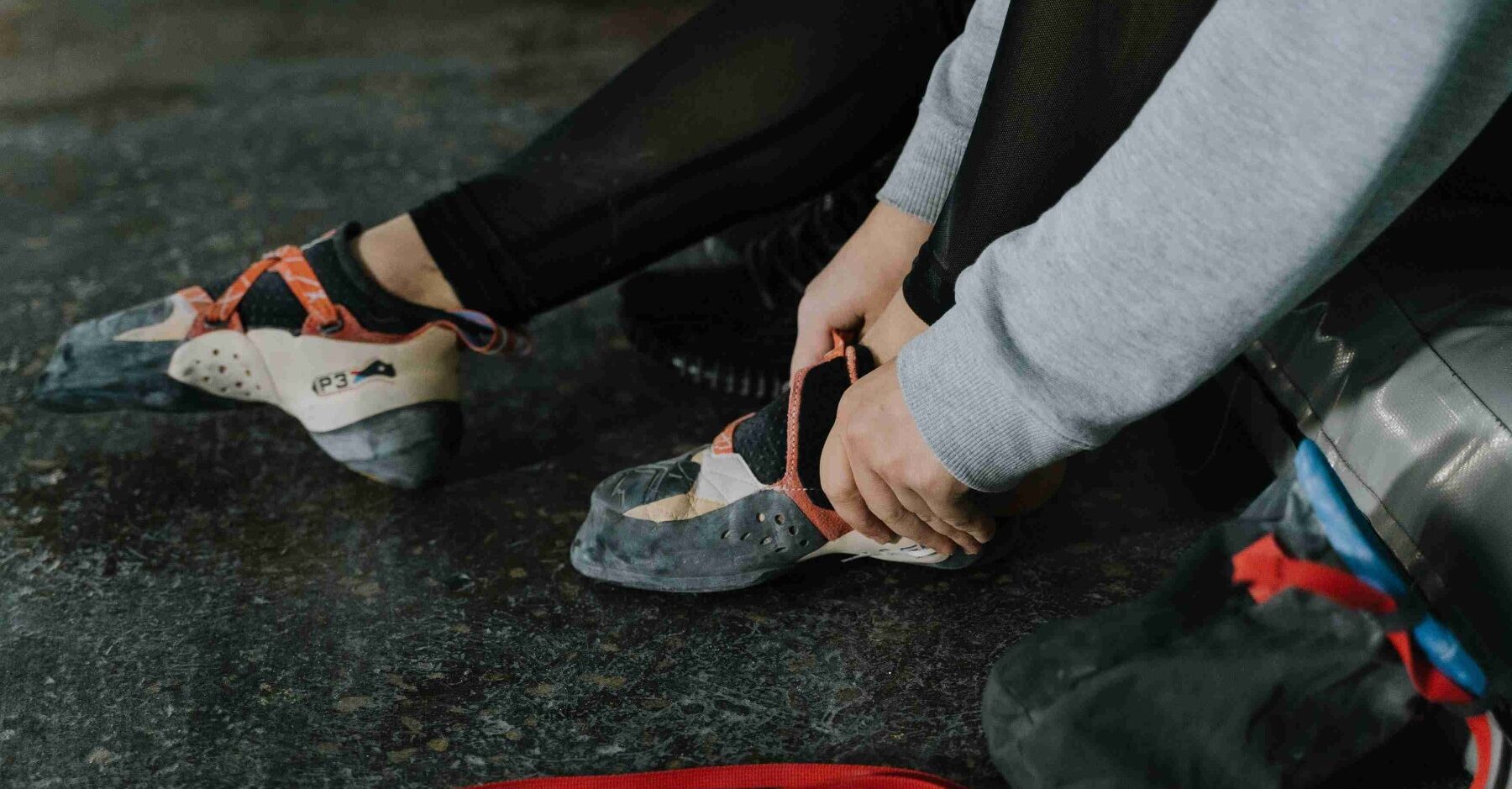
Climbing shoes stand as vital rock climbing tools, providing climbers with specialized features essential for navigating challenging terrain. With their sticky rubber soles and snug fit, these shoes offer the necessary traction and support for climbers to tackle even the most demanding routes with confidence.
Why are Climbing shoes necessary for rock climbers?
For rock climbers, having the right pair of climbing shoes is paramount. Without them, climbers risk compromised grip and stability, hindering their ability to ascend safely and efficiently.
Where to Purchase Climbing Shoes?
In the USA, climbers can find a diverse range of climbing shoes at reputable outdoor gear retailers such as REI, Backcountry, and Moosejaw. Additionally, many climbing gyms feature pro shops stocked with various climbing footwear options, allowing climbers to try on different models before making a purchase.
Key Features of Climbing Shoes:
- Sticky Rubber: Climbing shoes are equipped with specialized rubber soles that provide exceptional friction on rock surfaces, ensuring secure footing on even the smallest footholds.
- Snug Fit: A close-fitting design ensures climbers’ feet remain in constant contact with the shoe’s sole, maximizing precision and control during climbs.
- Downward Curvature: Many climbing shoes feature a downturned toe section, bringing the climber’s toes closer to the rock and enhancing their ability to grip and maneuver on overhangs and challenging features.
Carabiners
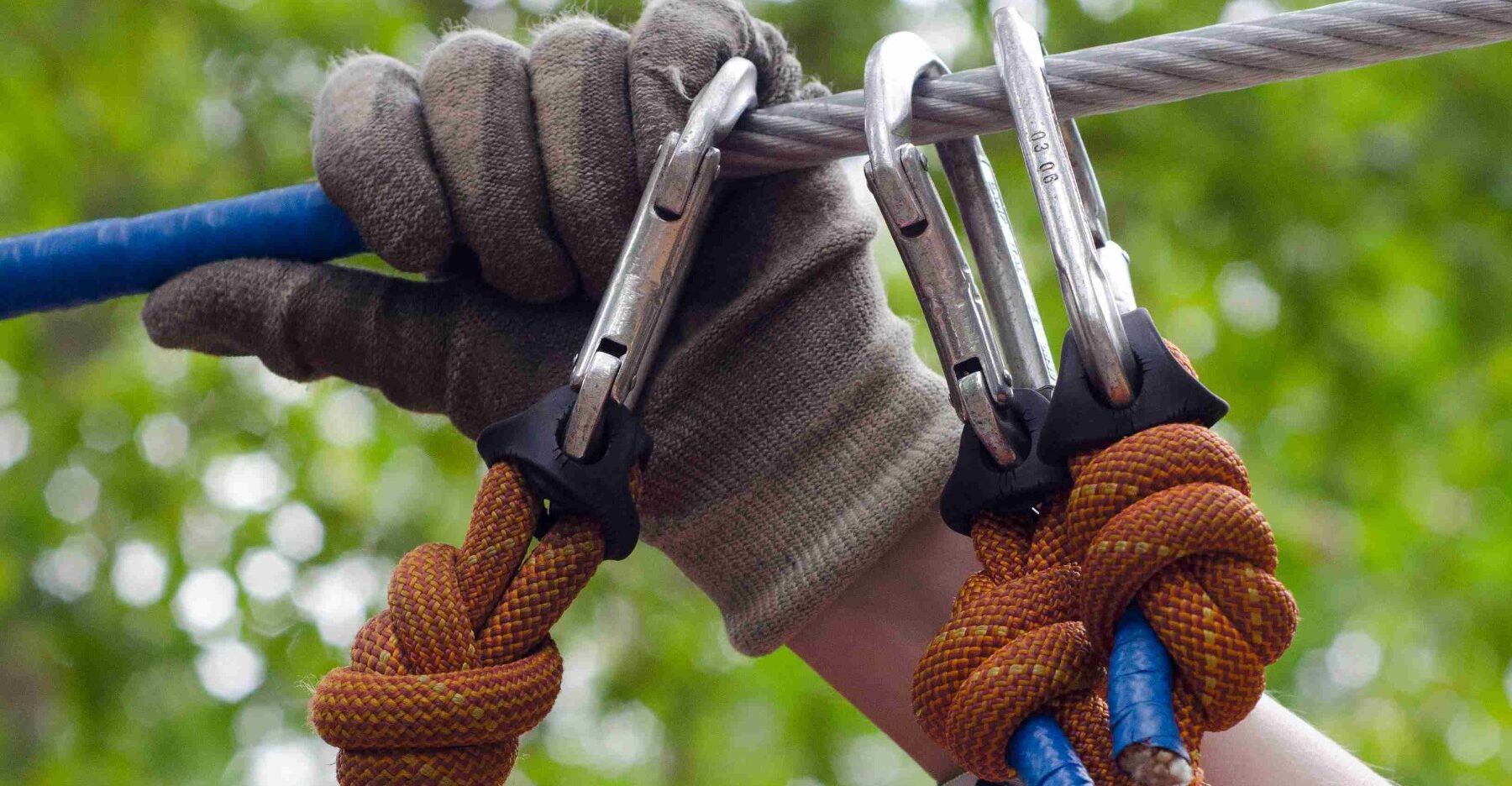
Carabiners are indispensable rock climbing tools, serving as crucial links between climbers’ harnesses, ropes, anchor points, and other gear. These D-shaped metal rings, available in various sizes and locking mechanisms, provide secure attachment points, ensuring climbers’ safety and facilitating smooth rope movement throughout their ascent.
Why are Carabiners necessary for rock climbers?
For rock climbers, carabiners are essential for creating a secure connection between their equipment and the climbing environment. Without them, climbers would lack the means to safely navigate routes, increasing the risk of accidents and falls.
Where to Purchase Carabiners?
In the USA, climbers can acquire a wide array of carabiners from reputable outdoor gear retailers such as REI, Backcountry, and Moosejaw. Additionally, many climbing gyms feature pro shops stocked with various carabiner models, allowing climbers to compare features and select the ones best suited to their climbing needs.
Key Features of carabiners:
- Strength: Carabiners are built to withstand immense forces, making them reliable tools for supporting climbers’ weight and ensuring their safety during ascents.
- Locking Mechanisms: Many carabiners feature locking mechanisms such as screw or twist-gate closures, preventing accidental opening and providing an extra layer of security for climbers.
- Gate Size and Shape: Carabiners come in various gate sizes and shapes, with wider gates accommodating thicker ropes and slings, while D-shaped carabiners offer better racking and organization compared to oval shapes, enhancing climbers’ efficiency on the rock face.
Belay Devices
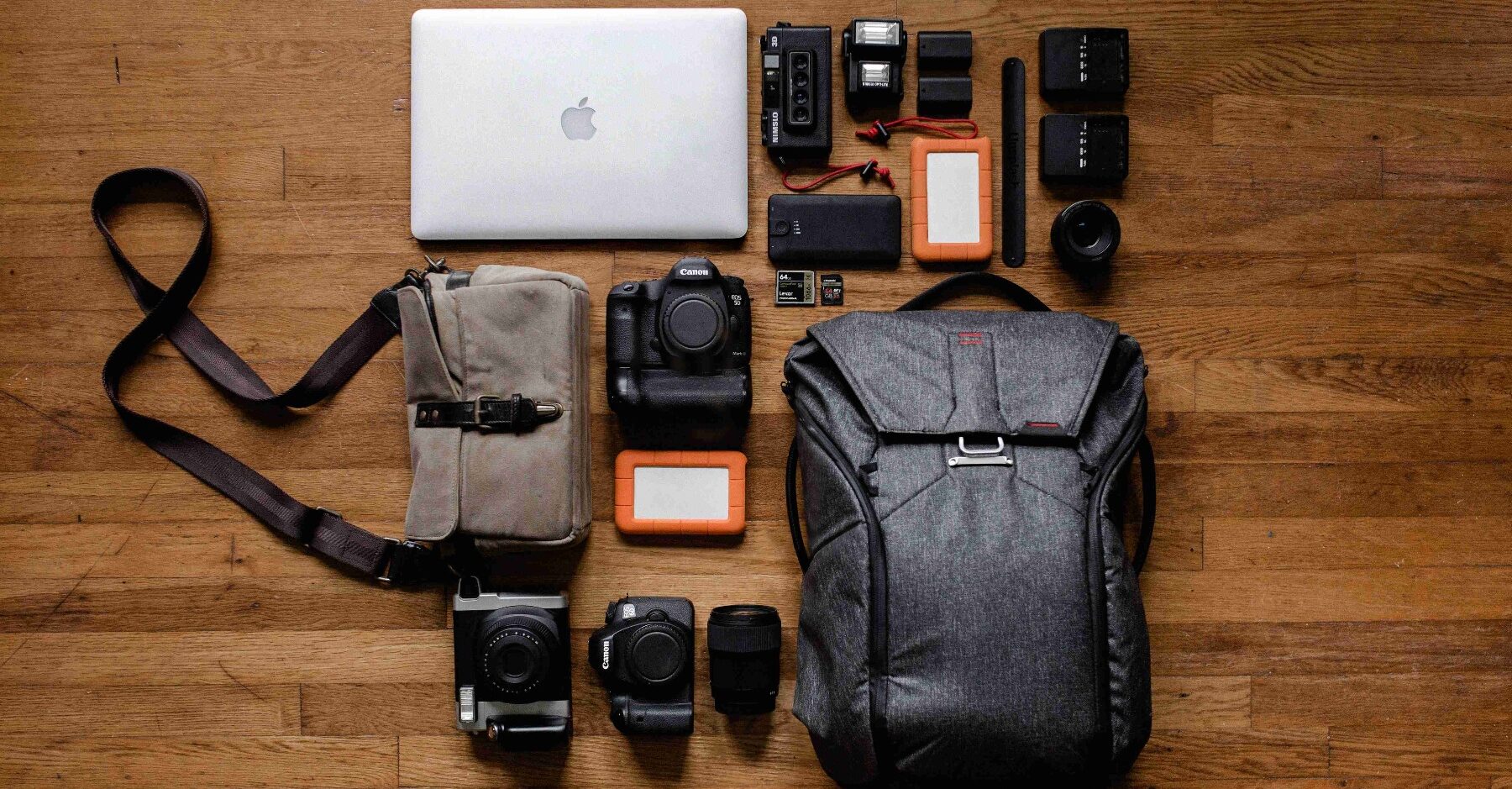
A belay device stands as an essential rock climbing tool, providing controlled friction on the rope as their partner ascends or descends. This friction device, attached to the climber’s harness, ensures a smooth and controlled climb and descent, offering peace of mind to both climbers.
Why are Belay Devices necessary for rock climbers?
For rock climbers, a belay device is indispensable for ensuring the safety of the climber and their partner during the ascent and descent. Without it, climbers would lack the means to control the rope effectively, increasing the risk of accidents and falls.
Where to Purchase Belay Devices?
In the USA, climbers can find a variety of belay devices at trusted outdoor gear retailers such as REI, Backcountry, and Moosejaw. Additionally, many climbing gyms feature pro shops stocked with various belay device models, allowing climbers to explore different options before making a purchase.
Key Features of Belay Devices:
- Assisting Mode: Many belay devices offer an assisted braking system that engages automatically in case of a sudden fall, providing an additional layer of safety for climbers and their partners.
- Guide Channel: A smooth guide channel ensures the rope feeds smoothly through the device, minimizing friction and making belaying more efficient and comfortable.
- Versatility: Some belay devices can be used for rappelling or self-lowering, adding versatility to climbers’ gear and enhancing their overall climbing experience.
Climbing Rope

A climbing rope, an essential rock climbing tool, acts as a lifeline for climbers, absorbing the force of falls and preventing injuries. It serves as a crucial link between climbers and safety, allowing for secure ascents and descents on rock faces.
Why are Climbing Ropes necessary for rock climbers?
For rock climbers, a reliable climbing rope is indispensable for safety and security during climbs. Without it, climbers would be exposed to significant risks of falls and injuries, making it a non-negotiable piece of equipment for every climb.
Where to Purchase Climbing Rope?
In the USA, climbers can purchase high-quality climbing ropes from reputable outdoor gear retailers such as REI, Backcountry, and Moosejaw. These stores offer a wide range of ropes in various lengths, diameters, and specifications to suit different climbing needs.
Key Features of Climbing Rope:
- Dynamic Stretch: Climbing ropes are designed to absorb the shock of falls, reducing the impact on climbers and their gear.
- Durability: Climbing ropes are constructed from durable materials to withstand friction against rock surfaces and harsh weather conditions.
- Diameter and Weight: Rope diameter and weight impact handling and strength, with thicker ropes offering higher strength and thinner ropes being lighter and more manageable for climbers.
Chalk Bag

A chalk bag is a must-have rock climbing tool, providing climbers with a convenient way to keep their hands dry and enhance grip on holds. It holds magnesium carbonate powder, commonly known as chalk, which absorbs moisture, ensuring climbers maintain a secure grip during climbs.
Why are Chalk bags necessary for rock climbers?
For rock climbers, a chalk bag is essential for maintaining grip and preventing slips, especially when tackling challenging routes. It helps climbers overcome sweaty hands, ensuring confidence and stability during the climb.
Where to Purchase Chalk Bag?
In the USA, climbers can find a variety of chalk bags at reputable outdoor gear retailers such as REI, Backcountry, and Moosejaw. Additionally, many climbing gyms have pro shops stocked with various styles and features of chalk bags to cater to climbers’ preferences.
Key Features of Chalk Bag:
- Closure System: Chalk bags feature convenient closure systems such as drawstrings or cinch closures to prevent chalk from spilling out while climbing.
- Brush Attachment: Many chalk bags come with built-in brush holders, allowing climbers to easily access their brush for cleaning holds and maintaining chalk freshness.
- Pockets and Compartments: Some chalk bags offer additional pockets for storing keys, tape, or other small climbing essentials, keeping everything organized and within reach during climbs.
Quickdraws
Quickdraws are indispensable rock climbing tools that streamline the process of connecting the rope to bolts on a route. They consist of pre-assembled slings with carabiners at each end, providing climbers with efficient and secure attachment points during climbs.
Why are Quickdraws necessary for rock climbers?
For rock climbers, quickdraws are essential for saving time and effort while clipping the rope to bolts on routes. They allow climbers to focus on the ascent without the hassle of individually connecting carabiners and slings, enhancing safety and efficiency during climbs.
Where to Purchase Quickdraws?
In the USA, climbers can purchase a variety of quickdraws from reputable outdoor gear retailers such as REI, Backcountry, and Moosejaw. Additionally, climbing gyms often have pro shops stocked with different brands and types of quickdraws to cater to climbers’ preferences.
Key Features of Quickdraws:
- Carabiner Type: Quickdraws come with a straight gate or bent gate carabiners, offering climbers options for ease of clipping and rope clearance.
- Sling Length: Quickdraws are available with standard 12cm slings or longer slings for clipping around obstacles or extending reach on routes.
- Durability and Weight: Quickdraws are constructed from durable materials like aluminum or Dyneema to withstand significant forces, with lighter options being ideal for weight-conscious climbers or multi-pitch climbs.
Helmets
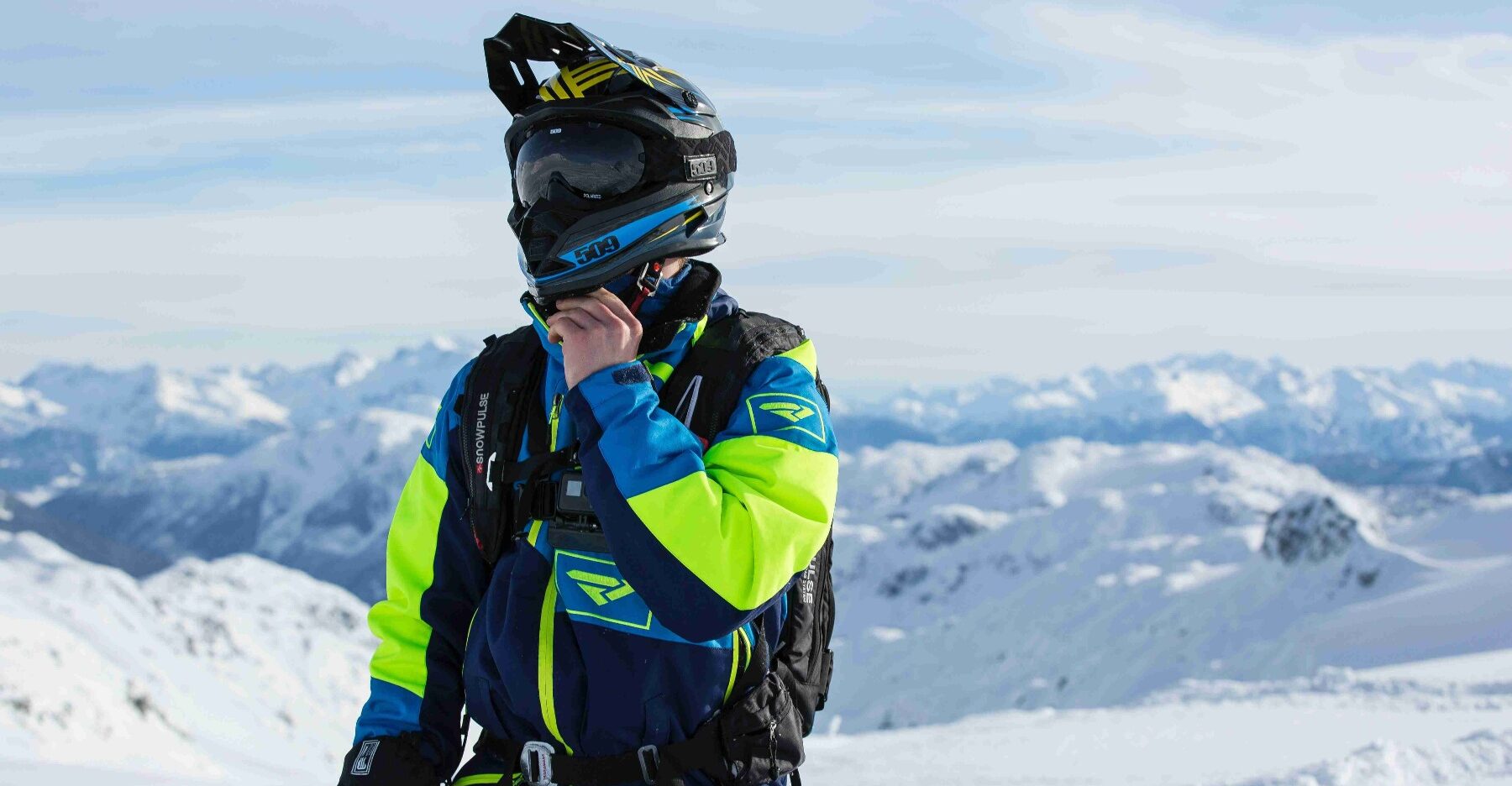
Helmets are essential rock climbing tools that provide vital protection for climbers’ heads against falling debris, impacts, and potential hazards on the climbing route. They form a protective dome around the skull, safeguarding climbers from unexpected bumps, scrapes, and falling objects.
Why are Helmets necessary for rock climbers?
For rock climbers, helmets are non-negotiable safety equipment that significantly reduces the risk of head injuries during climbs. They absorb the impact of falling rocks and minimize the severity of accidents, ensuring climbers can pursue their passion with confidence and peace of mind.
Where to Purchase Helmets?
In the USA, climbers can purchase a wide range of climbing helmets from reputable outdoor gear retailers such as REI, Backcountry, and Moosejaw. Additionally, climbing gyms often have pro shops stocked with various helmet models to cater to climbers’ preferences and safety needs.
Key Features of Helmets:
- Shell and Liner: Helmets typically feature a hard outer shell to deflect impacts and a shock-absorbing liner to disperse force, meeting safety standards such as UIAA or CE certifications.
- Ventilation: Climbing helmets come with ventilation systems or vents to allow airflow and keep climbers’ heads cool and comfortable during strenuous climbs.
- Headlamp Compatibility: Many helmets are designed with headlamp clips or integrated mounts, allowing climbers to attach headlamps for visibility during dawn patrols, evening climbs, or low-light conditions.
Climbing Gloves
Climbing gloves stand as essential rock climbing tools, offering a protective layer that enhances grip and shields palms from blisters and scrapes. These gloves become indispensable allies for climbers, transforming challenging holds into manageable surfaces and allowing a focus on conquering the climb with confidence.
Why are Climbing gloves necessary for rock climbers?
While not always essential, climbing gloves provide several advantages. They offer protection against abrasions from rough rock surfaces, preventing painful blisters and maintaining a secure grip. Climbers can tackle tougher routes and endure longer climbs comfortably and confidently with the added benefit of enhanced friction on smooth holds.
Where to Purchase Climbing Gloves?
In the USA, climbing gloves are readily available at outdoor gear retailers such as REI, Backcountry, and Moosejaw. Climbing gyms also frequently feature pro shops with a variety of glove styles, allowing climbers to find the perfect fit for their hand size and climbing preferences.
Key Features of Climbing Gloves
- Material: Climbing gloves come in various materials, with leather offering excellent durability and grip, while synthetic options provide a lighter and more breathable alternative.
- Finger Coverage: Climbers can choose between full-finger gloves for maximum protection or half-finger gloves for improved dexterity and ventilation, depending on their climbing style and preferences.
- Closure System: Climbing gloves feature different closure systems, such as Velcro straps for easy adjustability or pull-on designs for a snug fit. Selecting a closure system that secures the glove comfortably without restricting movement is crucial for optimal performance.
Headlamps

Headlamps serve as indispensable rock climbing tools, illuminating the path for climbers during dawn ascents, late-night rappels, and exploration of hidden caves. With their focused beams, headlamps guide climbers through intricate rock faces, providing essential visibility and enhancing safety in low-light conditions.
Why are Headlamps necessary for rock climbers?
For rock climbers, headlamps are essential for safe and precise movement in low-light environments, ensuring climbers can see footholds and navigate technical sections with confidence. Unlike handheld flashlights, headlamps free climbers’ hands for climbing, making them indispensable tools for nocturnal adventures.
Where to Purchase Headlamps?
Headlamps are readily available for purchase in the USA at outdoor gear retailers like REI, Backcountry, and Moosejaw. Climbing gyms often feature pro shops stocked with various headlamp models, allowing climbers to choose the ideal headlamp for their climbing needs and preferences.
Key Features of Headlamps:
- Brightness and Beam Options: Headlamps come with various lumen outputs to cater to different needs, offering adjustable beam angles for focused spotlighting or wider floodlighting.
- Battery Life and Type: Climbers can select headlamps with suitable battery life based on the duration of their climbs, choosing between rechargeable options for sustainability or replaceable batteries for convenience during extended trips.
- Comfort and Fit: Comfortable headlamps are essential for extended wear during climbs, featuring lightweight designs with adjustable headbands and sweat-wicking head straps for added comfort during strenuous ascents.
Overview
So, the world of rock climbing tools offers a diverse array of essential equipment, each serving a unique purpose in ensuring climbers’ safety and enhancing their experience. From harnesses to the precision of climbing shoes and the connectivity of carabiners, these tools form an integral part of every climber’s kit.
Whether exploring the heights of cliffs or venturing into hidden caves, investing in quality climbing gear ensures not only safety but also a more enjoyable and confident ascent.
Ready to elevate your climbing game?
Explore our curated selection of top-quality rock-climbing tools.
